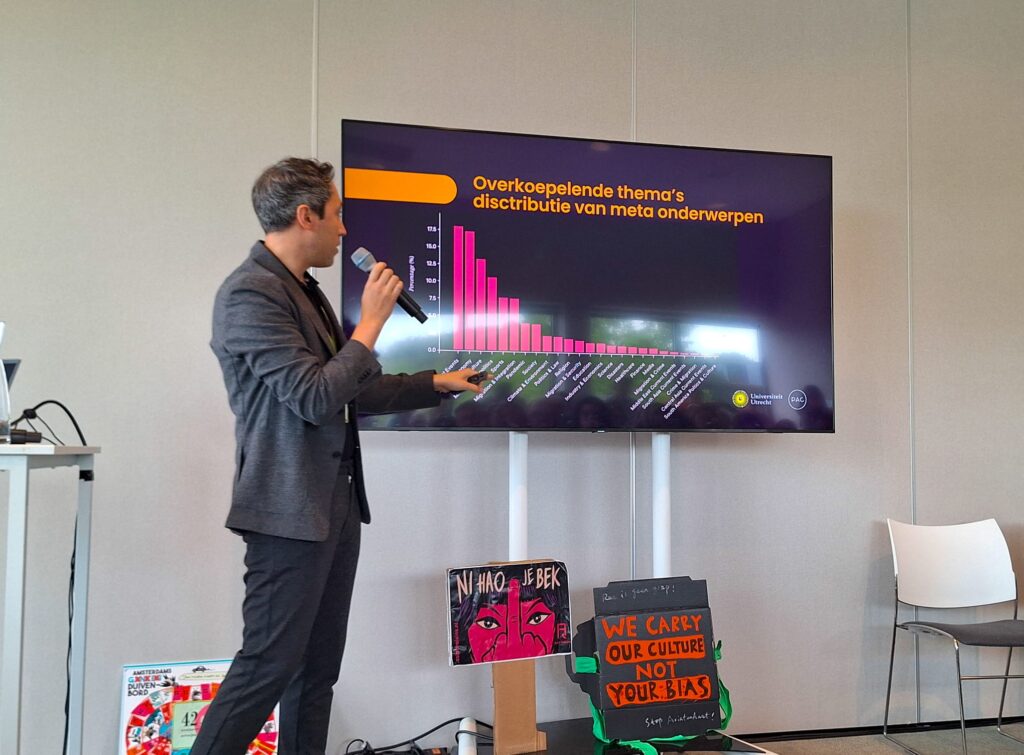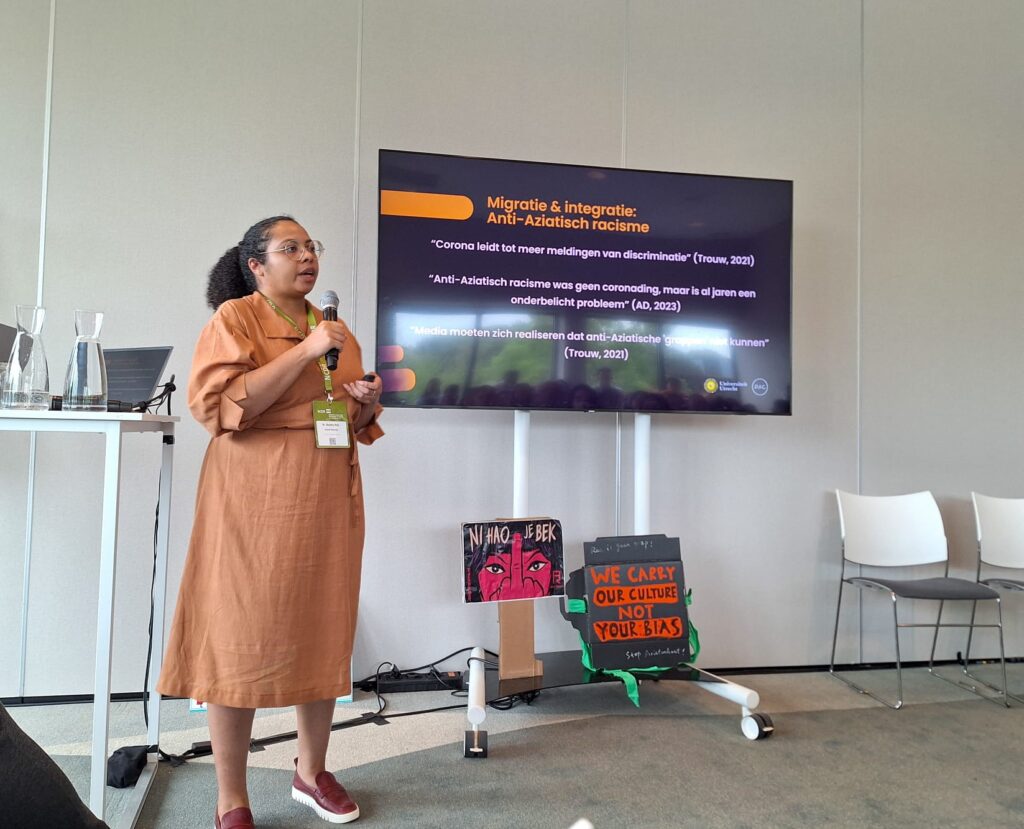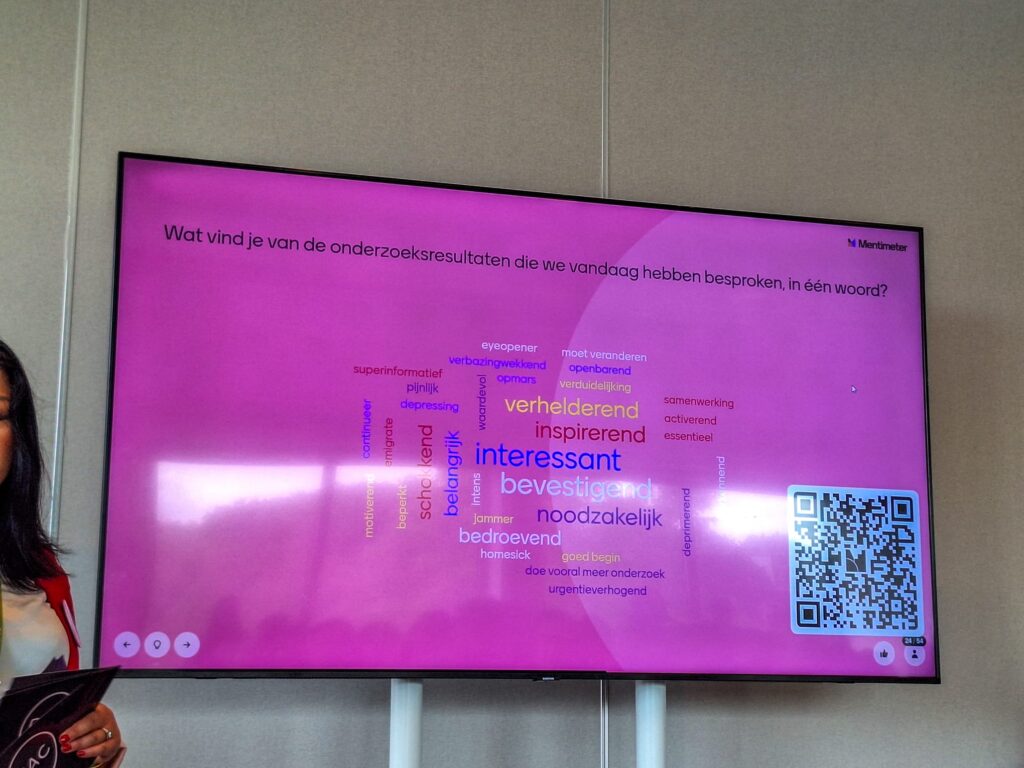The Representation of Asians in Dutch News Media
Impact Project Collaboration Between PAC, Dr. Diantha Vliet and Data School
“Not everything that is faced can be changed, but nothing can be changed until it is faced.”
James Baldwin
On June 26, 2025, during the National Congress Against Discrimination and Racism, we presented findings from one of our Impact Projects that investigates the representation of Asians in Dutch news media. This transdisciplinary project brings together expertise from the Pan Asian Collective (PAC), represented at the Congress by Hui-Hui Pan and Bei Wang, as well as Dr. Diantha Vliet and Data School, represented by Dr. Dennis Nguyen.
The main questions the project is grappling with include:
- How are Asians represented in mainstream news media in the Netherlands?
- What are the overarching topics and prevalent media frames reflected in the news articles?
- What can we learn from this representation about perceptions of migration and integration?
Pillar 1: Findings From the Quantitative Research
Dr. Dennis Nguyen began the session by sharing findings from the quantitative research, which employed a mixed-methods approach combining computational analysis and manual discourse analysis. This analysis covered articles from 2010 to 2024 from the news outlets De Volkskrant, Trouw, AD, and De Telegraaf. Out of more than one million total articles, only 0.57% (approximately 11,143) were related to Asia. Out of these, just 126 articles specifically referred to Asians in the Netherlands, and fewer than 30 focused on Asians as the main topic.
Key findings from pillar 1 include:
- Asia is predominantly portrayed as “over there,” a “foreign issue,” rather than being “right here,” in the Netherlands.
- The focus of Asia-related articles is primarily on China, the Koreas, Japan, Southeast Asia, and the Pacific Islands, while Central and South Asia receive less attention.
- Asian communities in the Netherlands are often overlooked in the overall media landscape.
- Dominant meta-themes identified include “East Asia Current Events,” “Industries and Economy,” and “Military and Geopolitics.”
- Specific themes noted include “Cuisine,” “Corona Outbreak,” and “Chinese Navy Exercises.”

Pillar 2: Findings From the Qualitative Research
Dr. Diantha Vliet then presented findings from her qualitative analysis of the few articles focused on Asian communities in the Netherlands. The most notable insights reveal that Asian culture is:
- Frequently reduced to food and parties, with headlines like: “Utrecht leaves safe food culture behind and falls for hip Asian street food: ‘Gen Z wants beautiful, light and fresh.’”
- Or centered around questions of belonging, such as: “What else do you have to do to be considered Dutch?”
- Occasionally touched upon in terms of history and remembrance, as seen in headlines like: “The bright side of 150 years of migration.”
- Discussed through comparisons with other forms of discrimination, illustrated by headlines like: “Discrimination against Jews, homosexuals, and women also deserves attention.”
- And, at times, media address anti-Asian racism more directly, stating: “Anti-Asian racism was not a corona thing, but has been an underexposed problem for years” or highlighting that “Media must realize that anti-Asian ‘jokes’ are unacceptable.”

Panel Discussion, Audience Response, and Further Reflections
During two panel discussions in the morning and afternoon sessions, Dr. Diantha Vliet, Annebregt Dijkman, Pete Wu, Tim Matthijsen and Daniëlle Arets responded to questions and topics, including acknowledging blind spots in journalism, policy, and education, the power of media in framing and defining supposed truths (and dominant alleged realities), the significance of media literacy, and the need for raising awareness and starting the conversation to progress. They further emphasized that the concept of “neutrality” in journalism needs to be problematized, as it often works to conceal the fact that we are always speaking from a specific situated position – and, crucially, this position may be linked to power dynamics that should be, at the very least, reflected upon. Finally, the role of cross-sector collaborations in addressing pressing societal challenges was highlighted as essential to making such research findings actionable and reflected in policies, education, and journalism practices.
As was pointed out during the event:
“There is actually still a lot of work to be done in all kinds of ways. We need not only journalism for that, not only academia – we need everyone here in the room, contributing in whatever way you can.”

Words and phrases like affirmative, necessary, enlightening, inspiring, sad resonated during the plenary discussion and audience reactions, aptly capturing the project’s spirit. From the difficult acknowledgment of a reality that can no longer be ignored and the collaborative efforts of making that reality visible to those who had not seen it before, to evoking a sense of hope – that now, having identified, illuminated, and faced this troubling reality, we might actually be in a better position to change it.
In a conversation I had with Dr. Diantha Vliet regarding this project, she expressed her perspective on the significance of such collaborative research with external partners. She reflected that identifying and revealing patterns – whether in discourse, culture, or media representation – has always been central to her inquiry, as these patterns shape societal perceptions, assumptions, and opinions, ultimately amplifying certain voices while marginalizing others. Yet, the challenge of creating meaningful impact goes beyond merely working together to expose these patterns; it also involves developing approaches to resist, question, and transform them. This means translating our discoveries into actionable steps that we commit to actively engage with – not only by examining our own individual complicities, but also by interrogating the societal, cultural, political, and institutional structures in which we are implicated in.
As we continue this important work, I invite you to stay tuned to our website and LinkedIn for updates on future events, emerging insights, and the progression of this Impact Project.

